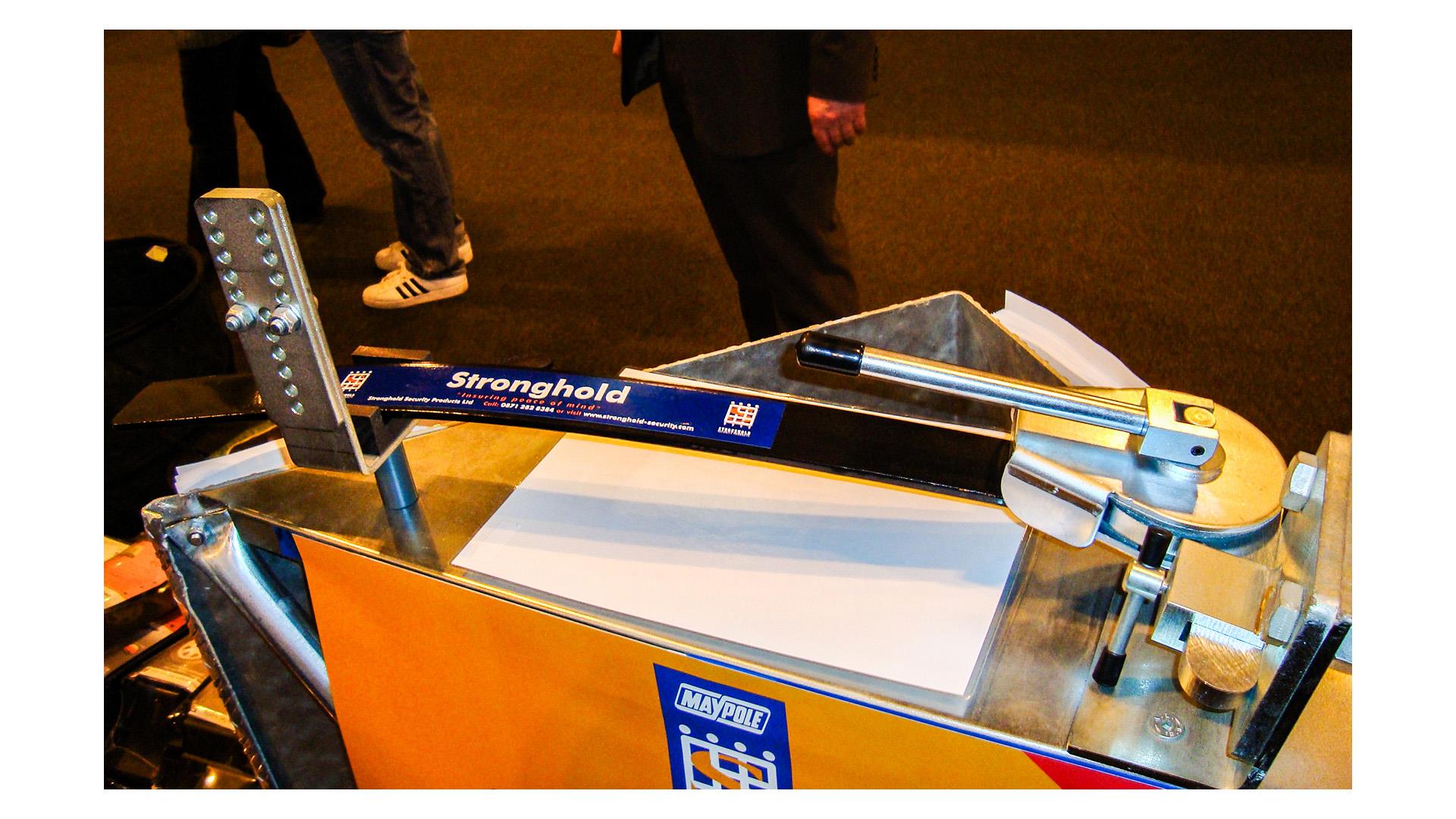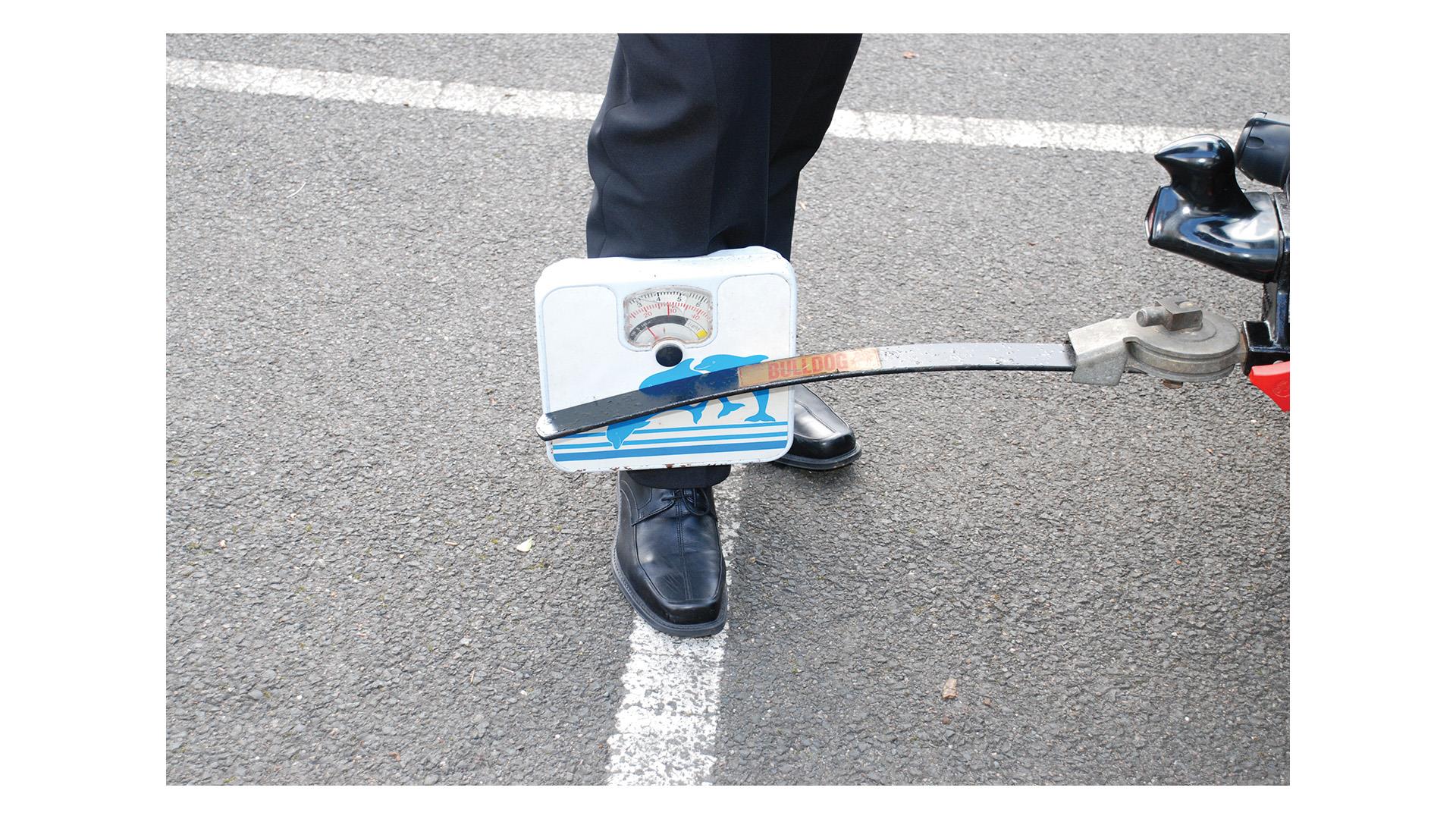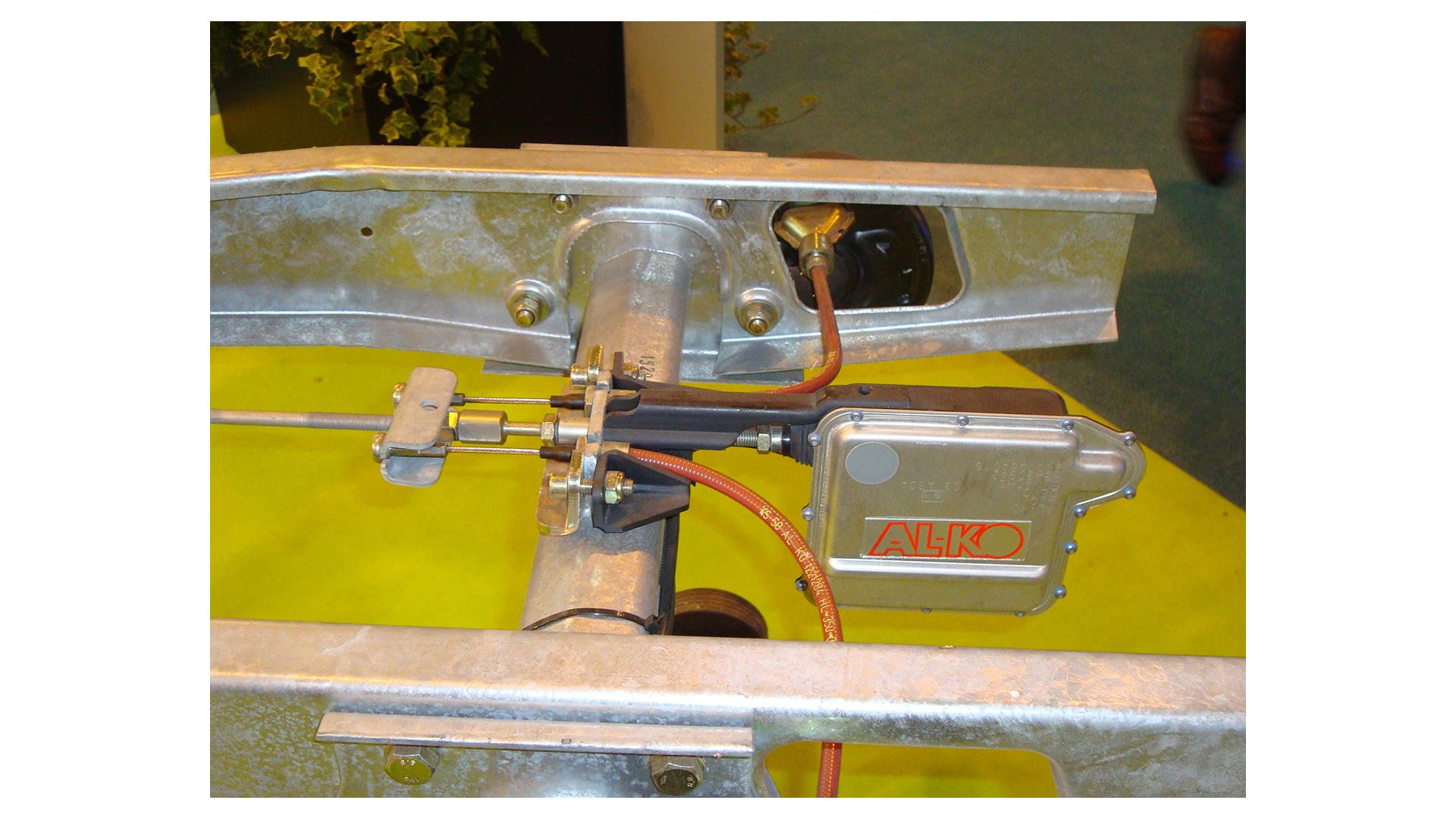Expert Guide for Caravan Stabilisers

Safe towing primarily depends on a good match of car and caravan, but many other factors are important too, such as how you load your car and caravan and the maintenance and driving of the outfit. However, even with the perfect outfit there is still the possibility that a sudden side wind, unexpected pothole or passing a high-sided vehicle can create momentary instability. This is when a stabiliser can help.
The Club always advises caravanners to use a stabiliser, but not as a means of rectifying problems with a poorly-matched outfit or a badly-loaded caravan. It should be regarded as an extra safety precaution that will help if things go wrong. Checking the caravan noseweight is as heavy as possible but within the limits of the car and caravan should be the first step to help create a stable outfit, more details are covered in our Expert Guide to Towing Safely.
Check your car and caravan are well matched by referring to our Expert Guide here and you can benefit from using our Towing Match Service which is free for members when you join the Club.
Even the best loaded and balanced outfit can sometimes be affected by external factors that create unwanted movement, over which the driver has little control and it is then that a stabiliser can help.
There are basically two types of movement that a towed caravan can experience. First is pitching - a vertical movement often experienced after going over a pot hole or sudden dip in the road. This feels alarming but generally will subside quickly when the unit is back on a level surface. It is however uncomfortable for the driver at the time.
Second is the lateral movement known technically as - yaw, movement of the caravan from side to side relative to the car. According to circumstances this can either be a minor inconvenience that quickly subsides or a serious condition that, if left unchecked, can lead to the extremely dangerous loss of control. This is known as snaking.
There are now three main types of stabilising devices available - those that use a physical connection such as a blade between the car and caravan, those that are attached to the towball itself, and the latest electronically-assisted systems that use the caravan brakes to keep the unit in line. The first two types depend on some restriction or damping down of the caravan's lateral movement to prevent the initial instability developing into something more serious and are therefore said to increase the critical speed at which instability occurs. The electronically-assisted systems work in a different way by operating the caravan brakes to pull the outfit into line once a set level of instability is detected.
The more stable the caravan is in the first place the less likely it is that a stability device will be needed. The following is not an exhaustive list of stabilisers, as there are other types on the market, but these are the most common.
Blade-type stabilisers
The simple and inexpensive blade-type stabiliser ruled the roost for many years and there is no doubt it can be effective. This system operates by using a metal leaf spring with a friction caravan's drawbar (A-frame). As the caravan moves sideways relative to the car, the friction pads in the turntable act to resist this movement. The spring itself, being a strong piece of metal, will also provide resistance to vertical movements and thus help reduce pitching.
 Blade stabilisers are more fiddly to fit but tend to provide better stabilising performance
Blade stabilisers are more fiddly to fit but tend to provide better stabilising performanceAn angle bracket must be fitted accurately to the caravan chassis in accordance with the instructions to support the leaf spring at the correct location on the A-frame. As drilling of modern caravan chassis is rarely permitted because the metal structure's strength can be compromised, the angle bracket needs to be clamped to the chassis and this may require a cut into the A frame's plastic fairing. Care needs to be taken with some older caravans with aluminium chassis where special precautions are required to stop the steel angle bracket from directly touching the aluminium. At the car end the friction turntable is fitted to a special bracket supplied by the stabiliser manufacturer and attached to the car's towing bracket face plate by bolts. Generally the installation of this type of stabiliser is most suited to a standard fixed-flange towball, although there are clamps available which can be fitted to a swan-neck towbar.
After installation the friction turntable tends to bed down and needs to be checked after a period of towing and at regular intervals thereafter to check that it is tightened to give the right amount of friction for it to work effectively. This can be checked by using a set of bathroom scales held sideways to the spring when it is freed from the caravan - a resistance of about 27-30kg is usually needed for correct operation. Check the stabiliser manufacturer's instructions for the precise amount and how to adjust it (normally done by turning the nut on the top as needed).
 Adjusting a blade stabiliser is easy with a bathroom scale
Adjusting a blade stabiliser is easy with a bathroom scaleThe friction pads in the turntable will eventually wear and need to be replaced. This can be undertaken on a DIY basis, by your caravan dealer or a specialist company.
These stabilisers are a popular and effective method of providing confidence when towing but they do need periodic adjustment to perform at their best. They also need to be detached from the car for solo use and have to be stowed somewhere.
You also need to remember that the stabiliser may delay the onset of the caravan's overrun braking operation as the mechanism adds friction to the caravan moving forward, but the effect is slight. There can also be a load equalising affect with these spring blade stabilisers whereby some of the noseweight is transferred to the front of the towcar and the caravan axle, but again this is likely to be relatively small.
Also available are twin-blade versions to provide maximum damping for large outfits. Another variation is for the simple blade system to use a gas-filled damper instead of the conventional friction pads. Known as the Straightliner by SAS Products, this device uses an innovative V-shaped plate and roller bearing. If the caravan starts to go out of line, the gas power pushes the roller back into the centre of the V to restore straight running.
Geometric stabilisers
You may still see a geometric stabiliser for sale second hand or on an older car. The use of these stabilisers is not considered legal for post August 1998 (S-reg or later) cars because of type approval regulations. The geometric stabiliser relies on altering the geometry of the towing system so that the apparent hitch point is moved closer to the axle of the car. It is a clever idea that mimics systems common in heavy vehicle trailers, but without the need for an extra long drawbar. This gives much improved stability without any applied damping force. Often know as trapezium-type stabilisers after the design of the original system, various versions were produced but all based on the same concept.
Towball-mounted stabilisers
Simplicity, lack of ancillary equipment and needing little or no adjustment in use has made this a popular alternative to blade stabilisers, helped by many caravan manufacturers that now fit the item as standard to nearly all models in the range. They are however significantly more expensive than the traditional blade type and some claim that due to the small area of grip on the towball they are less effective.
The principle is simple - a special caravan hitch takes the place of the standard hitch and fits over a dry towball. Inside is a set of friction pads that press directly on to the towball and provide resistance to hitch rotation and hence trailer sideways movement. Such a stabiliser hitch will help keep the caravan in line when passed by heavy vehicles or in a cross wind. The latest versions also have pads that will restrict vertical (pitching) movements as well.
 An AKS stabiliser fitted to Al-Ko chassis caravans
An AKS stabiliser fitted to Al-Ko chassis caravans
AL-KO makes its AKS system available in various versions to suit the weight of the caravan, so make sure you buy the right one if fitting it yourself. There is a guide on the side of the device that shows when the pads need changing, which can be done as a DIY job, following the instructions provided.
It is vital when using this kind of stabiliser that the towball is completely free of paint, grease or oil which can contaminate the stabiliser fiction pads and make them ineffective. If the towball has another type of coating or protection (like the towball on the left below) check with the supplier whether this requires removing when using a hitch stabiliser. Clean the ball with methylated spirit or similar to remove all traces of grease. A quick wipe over with a cloth is not enough. If you use your car to tow different types of trailer without such devices, you will always have to grease or degrease the ball each time you change.
The AL-KO stabiliser hitch is bigger than a standard hitch and cannot be used with a standard fixed flanged towball. A special extended neck towball must always be used with AL-KO stabiliser hitches, unless a swan-neck towball is used.

Comparison of standard towball (left) and Al-Ko towball (right) that must be used when using an Al-Ko stabiliser with a fixed flange installation
There can be a problem using an AL-KO stabiliser hitch with some vehicles that have spare wheels mounted on the rear door where the stabiliser handle operation is impeded by the presence of the spare wheel. A removeable handle is available from AL-KO at additional cost, which usually resolves the situation.
Caravans with BPW chassis, such as Elddis caravans, are fitted with a stabiliser hitch supplied by Winterhoff. This hitch uses the same principle of direct mounting to the towball, but it works with standard towballs as well as swan-necks. In theory you can fit an AL-KO version to an BPW chassis and a Winterhoff to an AL-KO chassis, but there are often difficulties with clearances especially with BPW's gas-assisted handbrake. It is thus generally preferable when retro-fitting to use the stabiliser applicable to the chassis it was designed for. And neither should be fitted to any chassis that has the older 360 degree fully-rotating hitch, as the stabilising system will be less efficient. The Westfalia SSK unit is of a similar design and operating principle.
 A Winterhoff stabiliser often fitted to Elddis before 2014 or available in the aftermarket
A Winterhoff stabiliser often fitted to Elddis before 2014 or available in the aftermarket
The towball mounted stabiliser hitch is the obvious choice for the growing number of towcars that are fitted with detachable towbars, as the stabiliser is fully part of the caravan and nothing needs to be attached to it from the car.
Things to consider before buying
- Do you really need a stabiliser? They are of limited value for small camping trailers
- Decide which type suits your use and budget
- Check the stabiliser is suitable for your chassis, towing bracket and ball
- If buying a new caravan consider a model with a stabiliser fitted as standard
- If buying secondhand, take care to examine the stabiliser's condition and availability of parts
Useful tips
- When fitting a new towball for a stabiliser hitch ensure you have the correct finish, in the main this will mean removing the paint or other finish with a fine-grade abrasive paper. Failure to do so will cause increased wear and may damage the hitch
- Blade and hitch stabilisers sometimes groan when in use. This is can be caused by friction pad contamination. If not too severe, clean the pads following manufacturer's instructions. If severe the pads will need to be replaced
- When using a stabiliser hitch clean your towball before each trip
- Cover towball or remove detachable type when not in use
- When reversing or manoeuvring on or off a site it's usually best to take the stabiliser off first
- Blade stabilisers may reduce ground clearance so take care boarding ferries and travelling over traffic calming humps
Active stability braking systems
 A stripped-back view of the brakes and electronic stability system as fitted to some caravans
A stripped-back view of the brakes and electronic stability system as fitted to some caravansAL-KO introduced the ATC (Automatic Trailer Control) system, for its chassis in 2007, and the idea has taken off with many manufacturers fitting it as standard on some models. BPW has a similar system called iDC (Intelligent Drive Control) for use on its own chassis, such as those used by Elddis in the UK up to around 2014. Practical testing has proved that both these systems are effective in maintaining stability under severe conditions.
These systems rely on sensors. When the sensors detect the sideways motion has gone beyond pre-determined limits, they gently apply both the caravan brakes together until the unit straightens up. The systems draws power from the towcar's electrics (13 pin or the older 12S) and features a self-test mode on start up and a status display on the caravan, which shows when it is ready to go. Older versions of both systems don't warn the driver directly of any system issues however, later versions of Al-Ko ATC can utilise an app to display status of the aid. The iDC system will revert to its start condition (brakes off) if there is a fault such as a blown fuse. More information can be found in our Expert Guide to Towbars and Towing Electrics.
Both ATC and iDC are common factory fitted options or are available for retro fit on most recent AL-KO or BPW chassis as appropriate. Both are intended to be used in conjunction with their manufacturers - existing hitch stabilisers. For these systems it is essential that the towcar's electrical supply system is able to supply sufficient power. In practice, experience has shown that failure of such systems is usually down to a blown fuse due to inadequate towbar wiring, therefore it is recommended that the wiring is capable of supporting a current draw of 20 amps.
There is also another system called the LEAS stabiliser that works rather differently, applying the brakes via an electrically-operated spring-controlled cam, whenever an out-of-limit yaw (snake) is detected. It takes its power from a separate socket on the car and also features an audible warning signal in the car. This German-made product is available from Conrad Anderson in the UK.
As with any stabiliser, great care must be taken to carefully match and load the car and caravan. These are emergency systems, they work effectively and enhance safety, but you must still drive with care, especially in high-speed conditions, and not rely on the unit to correct any mistakes you may have made.
The Pros and Cons of Stabilisers

 Inverted view of Al-Ko AKS Stabiliser
Inverted view of Al-Ko AKS Stabiliser
More related advice from the Club
Here is a small selection of our guidance you may find useful:
How to checking your caravans noseweight
